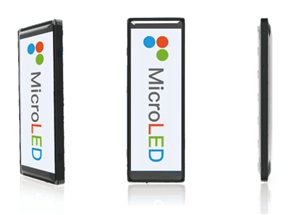- Home
- >
- News
- >
- Industry News
- >
- How LEDs Have Made the LCDs Obsolete
How LEDs Have Made the LCDs Obsolete
LED technology has drastically evolved from the first dimly lit, red diode invented in 1962 by General Electric. From space exploration to gigantic stadium screens, LED systems are now used in many industries for their efficiency and brightness. Video walls and other digital signage solutions have long been a way to create a visually captivating experience to enthrall viewers and attract attention. Seamless video integration across multiple screens adds an additional wow factor that produces an eye-catching display. Older technologies like LCD and Plasma displays are becoming obsolete due to the intrinsic properties of LEDs like brightness, efficiency, maintainability, and sustainability. LEDs save on costs via easier maintenance and lower energy demands, which can make a huge impact on ROI for the consumer.
The LED display market has seen strong growth as the technology becomes better integrated and continues to improve. Since LEDs draw much lower power, components like ballasts and power supplies are less likely to malfunction from heat and other inefficiencies that higher power products produce. Maintenance costs decrease since these hard to reach components last longer and fail less. Most large video walls require boom lifts and other equipment in order to change faulty components and the cost of renting the equipment is significantly more than the cost of the replacement.
Advantages of LED displays offer excellent brightness, fast response time, wider viewing angles, and a higher degree of reliability than traditional LCDs. As LED technology improves, products are being invented that can be viewed from up close, eliminating what was a huge advantage for LCDs. With LED displays of 1.25 mm pixel pitch or smaller coming on the market at an ever-increasing rate, some industry experts are predicting the demise of LCD screens as a component of large video displays. In the past, this quality reduction at close proximities has hindered LED applications. While LCD displays had long held an advantage over LED in terms of their interactive capability, that difference is quickly waning. LED touch displays are expected to appear on the market in the third quarter of 2017 with many other technological advancements forecasted.
The main advantage of LED displays over LCDs is the fact that there is no bezel, which allows for a completely seamless image. Another key advantage over LCDs is LEDs’ ability to be constructed in irregular shapes, as they allow for the creation of unique displays that can be a centerpiece of any venue. That flexibility makes them the perfect fit for environments such as retail stores, corporate lobbies and other high-end settings. The fundamental brightness of LED displays opens the door for video walls to be deployed in areas not previously possible, such as in store windows or other areas where light pollution may be a problem. LED-based displays are inherently brighter and more visible than LCD displays, and thus, much more visible and captivating across a myriad of applications ranging from low light to bright sunlight environments.






